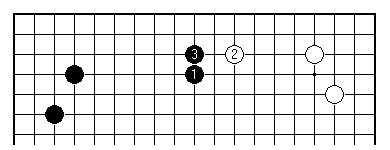

There is plenty more to be said about the subtle sequencing on the Go board. Various bystanders pile in with comments. PINK has background in general game theory and computing, SCOUT in shogi, OSSIAN played serious chess as a junior. When the dust settles, after a brisk discussion, there is quite an interesting story to tell about analysing Go.
Seems that chess GM Kotov first explicitly wrote down the professional way of looking at game analysis. The future plays in a game of complete information form a tree-like structure. Looking ahead in the game is a matter of visualising mentally some path or part of this tree. Fundamental to computer gaming is the machine's ability to operate on such trees as data structures.
The usual remarks go like this:
In fact quality of play is directly related to appropriate depth of analysis, good choice of candidate moves, judgement and pruning.
So much for general theory. What does it tell us about Go?
An apparently naive question is a good place to start. Why are we analysing Go positions?
Go players talk about "reading out" a position. There is no assumption that this process deals with predicting the future course of the game. Mostly it doesn't. It serves to answer "what if?" questions, about potential cuts, invasions, life-and-death questions and so on. It is standard to read out a position in one part of the board and then play elsewhere, based on the information gained. So, making the link to the previous topic of ignoring your opponent's play, the better your reading the greater the confidence you can bring to snatching the initiative.
Let's run down those bullet points. Reading systematically, going over the key sequences once and once only, is a large part of practical strength, and essential for pros. Straight-line "never mind the breadth, feel the depth" analysis is typified in Go by reading ladders; one of the most popular books, "Lessons in the Fundamentals" by Kageyama, makes the point that you may think you can't do this, but you're wrong. On the other hand reading is fairly useless in many positions, until you've found the correct direction of play by some other form of reasoning. Where a game involves large frameworks it can go into a phase where manoeuvring round their edges overrides tactical considerations.
When it comes to finding the good candidate plays, the answer in Go is perhaps not what people expect or want. Everyone knows that there are typically several hundred possible plays in a middlegame position. Does that mean a large number of candidates? It might do if your brain is silicon - this is a rather misleading reason often given for the weakness of computer Go programs. In fact strong players would look only at half-a-dozen candidates, on the first pass, in ordinary positions. We know this, by the simple test of how long it takes to play a game through, finding the plays from a printed record: amateur 1 dan 20 minutes, pro 10 minutes.
What about reaching judgements? This is key, of course. In practice you have to follow a sequence through until "whatever was happening has stopped happening". You may reach a life-and-death problem, a ko fight, or simply a sprawly mess of weak groups. Visualisation is helped by the fact that most positions are cumulative (add stones) - those that are not, which require plays "under the stones", i.e. back on points cleared by capture, account for many blind spots in analysis.
Perhaps most interesting and characteristic of all is one pruning technique. To use a fashionable phrase, "don't go there". In reading, reaching a position that can be judged unacceptable is a trigger for backtracking. Because the normal situation is that you are reading to inform yourself, there is a clear message: don't start in on this. That is bedrock for good play. If in some part of the board you can't convince yourself that there is a good move, just leave it alone.
To try to sum up: the way you cut off your analysis is supposed to be in tune with the position. This isn't a question-begging comment. There are positions where you'd want to be in a big ko fight (behind in territory but having a good supply of ko threats) - analysing some fight to a ko then fits exactly.
Here's an example to kick around.

How about Black 1 and 3?
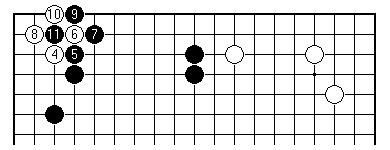
There is a standard ko fight after the invasion of the corner.
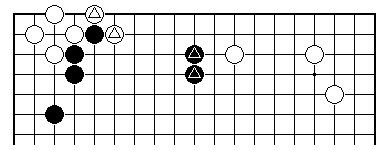
However, if Black were to lose this fight, we'd get this result (White marked stones: capture Black on the edge, and then one more play as Black follows up on a ko threat elsewhere). Black's marked stones have become silly. This result has "don't go there" stamped all over it, for Black. Time to ponder: if Black wins the fight the result is OK rather than marvellous, so backtrack all the way?
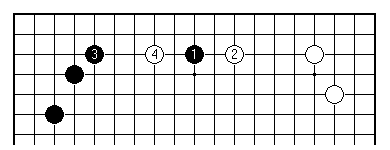
Fresh idea for Black 1 and 3. However, White can invade.
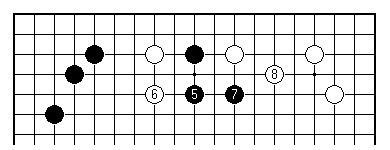
Black 5 any good? It looks as if White takes territory while attacking the weak black group. Black would need compensation from an attack on the left.
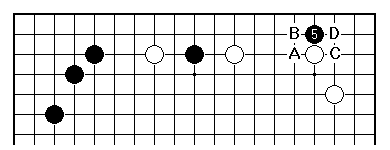
Backtrack to Black 5 here, a technique against enclosures. White A, B, C, or D? White will discard A quickly (Black then at C takes the corner). But each of White B, C, D will give Black some leverage for fighting on the side. Anyway both players are "herded" towards a sensible outcome, but the depth for cut-off of analysis can be seen to be quite uneven.
First published 17 August 2000 as On Your Side on MindZine,
Go Learning
© Charles Matthews 2000.